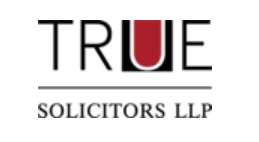
The popularity of smart wearable technology has been growing at a phenomenal rate during the past couple of years. Companies are now looking into ways in which they can take advantage of smart tech as a means to reduce workplace injuries and to help improve the overall health and productivity of their employees.
TRUE Solicitors have identified the newest health and safety technology to look out for in 2019:
Smart PPE
Smart wearable technology is evolving from fitness trackers and smartwatches, to smart personal protective equipment (PPE). Employers are implementing smart PPE to help prevent workplace injuries, reduce costs and to improve productivity of staff.
Smart PPE is any form of personal protective equipment that is connected to the internet to deliver real-time safety information. The aim of smart PPE is to reduce employees’ exposure to hazards through the data collected that is used to send notifications to adjust internal and external conditions. The real-time effectiveness of smart PPE reporting means that site managers are able to detect exactly when an employee trips or falls, loses their balance or carries too much weight.
Examples of smart PPE include:
Smart Helmets
Smart helmets are not only built to protect workers from physical hazards but also contain sensors to check things like the users heart rate, temperature, brain activity and oxygen levels in the blood. The data is tracked and stored in real time, providing management with key information to make them aware of instances where an employee may be too tired or not focused enough to perform tasks safely.
Smart helmets can also allow users to access vital data through their visor. Making it safer for employees to carry out other manual tasks with their hands free, rather than struggling to balance holding onto clipboards or tablets.
Smart Glasses
Smart glasses allow workers to communicate vital information back to HQ, such as audio and video recordings from the work site. Reversely HQ can send staff data such as maps, instructions and schematics to keep them safe and working.
Cold Wear
Cold wear involves technology that monitors the body temperature, humidity and perspiration levels of employees working outside in extreme cold weather. Information is sent back to the main office hub to allow management to check on the physical safety of their staff. For example if an employee is experiencing dangerously high or low body temperatures they can be called to leave the site that they are working from immediately to seek medical attention.
Location Devices
Location devices are particularly helpful in industries such as mining to keep track of employees’ exact locations when they are in hazardous locations, deep underground. Location devices can be embedded into clothing and are extremely lightweight. Being able to track employees exact location can make the difference between life and death in situations when time is off the essence.
Fatigue Monitors
Fatigue monitors can be embedded into clothing to monitor the eye and head movements of employees, which indicate if employees are becoming too tired to carry out work activities safely. Fatigue monitors are great for improving decision making and response times, making them particularly good for staff who have jobs which involve driving for long period of time. This should result in less chance of injuries and damages to vehicles caused through falling asleep at the wheel.
Environmental sensor clothing
Clothing fitted with environmental sensors that can detect and monitor gas, heat, chemicals and UV levels will be more commonplace in 2019 and beyond. This will help managers’ better monitor the physical health and safety of their employees when they are working in hazardous conditions.
Light-emitting clothing
Light-emitting clothing such as safety vests fitted with LEDs, help to make staff even more visible on busy construction sites and when working in the dark. Helping to reduce the risk of workplace accidents occurring as a result of poor visibility.
Wearable technology and workplace wellness
2019 will see employers increasingly taking advantage of wearable technology, such as smartwatches and fitness trackers, to improve health and safety in the workplace. Many companies will choose to implement wellness plans for staff to encourage active working. Research has proven that a healthy and active workforce can lead to increased productivity from employees, along with reduced sick related absences.
